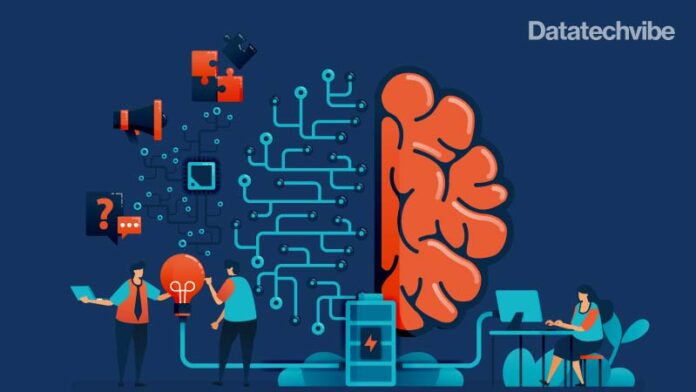Here are the trends of 2021 to look out for. AI-powered cybersecurity applications to increase, AI and ML are going to be the significant drivers in hyper-automation, and the use of AI/ML is expected to increasingly intertwine with IoT
According to IDC, in 2020, the revenue generated by Artificial Intelligence (AI) services and technologies reached around $160 billion.
Corporations are moving past the hype around the technology to discern how it can add practical value. To be specific, data for AI was a central theme of 2020, as new techniques that train AI with less data or increase data privacy protections gain traction.
As the tech matured, it also brought along new challenges For instance, Deepfakes are becoming mainstream, making real and fake media indiscernible. AI models can have an inherent bias, being fundamental in democratising AI. They are also available for use in malicious applications, like creating the next generation of malware.
The year 2021 looks like an opportunity for tech trends to grow to newer arenas. Intelligent machines, hybrid cloud, increased adoption of natural language processing (NLP), and increased focus on data science and machine learning (ML) and AI will be the highlights this year. Pragmatic AI, containerisation of analytics and AI, algorithmic differentiation, augmented data management, differential privacy, quantum analytics are the trends becoming a critical part of organisations after the pandemic.
For the layman, AI-powered techniques and ML technologies are just seen in Hollywood sci-fi movies like ‘Blackbox’ and ‘Tenet’. But in real-time, technology is gradually entering our life and business. Companies like OpenAI, Deepmind are creating generative pre-trained transformers, training robots how to walk, how to react, what to do, and what not to do. Their presence can be noticed everywhere, from complicated quantum computing systems to powerful medical diagnostic systems.
For instance, CloudMedX and Anthem together launched a digital tool named C19 Explorer that aims to allow public health officials and other health and community leaders to track and predict the impacts of COVID-19.
Let’s find out more about AI, as we take a closer look at the emerging AI and ML trends this year.
Also Read: Get Your Data Machine Learning Ready
- The growing role of AI and ML in Hyper-automation
Hyper-automation is an IT mega-trend identified by market research firm Gartner. It is an idea that most anything within an organisation, which can be automated, such as legacy business processes should be automated. The pandemic has accelerated the adoption of this concept, also known as digital process automation and intelligent process automation.
AI and ML are key components and major drivers of hyper-automation. To be successful, hyper-automation initiatives cannot rely on static packaged software. Automated business processes must be able to adapt to changing circumstances and respond to unexpected situations.
- Bringing Discipline To AI Development Through AI Engineering
According to Gartner, 53 per cent of AI projects successfully make it from prototype to total production. When trying to deploy developed AI systems and machine learning models, businesses and organisations generally struggle with system maintainability, scalability and governance. Businesses and organisations are coming to understand that a robust AI engineering strategy will improve the performance, scalability, interpretability and reliability of AI models and deliver the full value of AI investments.
Developing a disciplined AI engineering process is key. AI engineering incorporates elements of DataOps, ModelOps and DevOps. It makes AI a part of the mainstream DevOps process rather than a set of specialised and isolated projects.
- Increased Use of AI-powered Cybersecurity Applications
AI and ML-powered tech is increasingly finding their way into cybersecurity systems. Cybersecurity system developers are in a never-ending race to update their technology to keep pace with constantly evolving threats from malware, ransomware, DDoS attacks and more. AI and machine learning technology can be employed to help identify threats, including variants of earlier threats.
AI-powered cybersecurity tools collect data from a company’s own transactional systems, communications networks, digital activity and websites. It also collects data from external public sources and utilises AI-based algorithms to recognise and understand patterns and identify threatening activity.
Also Read: How to Counter DDoS Threats
AI-powered tech in home security systems today is largely limited to systems integrated with a consumer video camera and intruder alarm systems integrated with a voice assistant. According to IHS Markit, AI use will expand to create smart homes, where the system learns the ways, habits and preferences of its occupants in improving its ability to identify intruders.
- The Intersection of AI/ML and IoT
The IoT has been the fastest-growing technology area in recent years. According to Transforma Insights, the global IoT market will grow to 24.1 billion devices by 2030, generating US$ 1.5 trillion in revenue. The use of AI/ML is expected to increasingly intertwine with IoT. AI, ML and deep learning are already being used to make IoT devices and services smarter and more secure. The benefits flow both ways, given that AI and ML require large volumes of data to operate successfully, exactly what networks of IoT sensors and devices provide.
- Persistent Ethical Questions Around AI-based technology
Several leading IT vendors, including Microsoft, IBM and Amazon, announced that they would limit the use of their AI-based facial recognition technology by police departments in the US, putting the spotlight on a range of ethical questions around the increasing use of AI-based tech. That includes the obvious misuse of AI for ‘deepfake’ misinformation efforts and cyberattacks. It also included the grey areas such as the use of AI by governments and law enforcement organisations for surveillance and related activities and the use of AI by the business for marketing and customer relationship applications.









